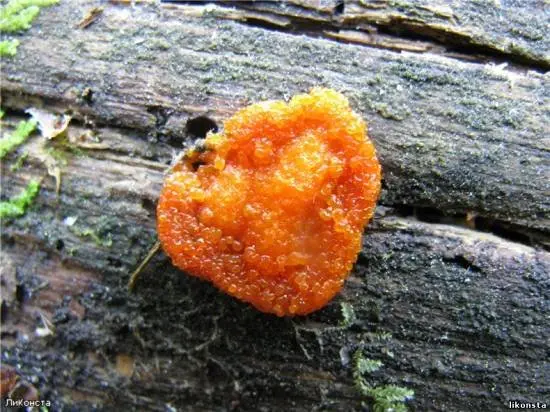Rusty tubifera (Tubifera ferruginosa)
- Department: Myxomycota (Myxomycetes)
- Class: Myxomycetes
- Order: Liceales / Liceida
- Type: Tubifera ferruginosa (Tubifera rusty)

Plasmodium: lives in hard-to-reach damp places. Colorless or slightly pinkish. Tubifera belongs to the family Reticulariaceae – slime molds, myxomycetes. Myxomycetes are fungi-like organisms, a cross between fungi and animals. In the Plasmodium stage, Tubifera moves and feeds on bacteria.
It is difficult to see Plasmodium, it lives in the crevices of cut down trees. Fruiting bodies of Tubifera of various shades of pinkish color. In the process of maturation, they become black with a rusty tint. The spores exit through the tubules and form the fruiting body.
Sporangia: Tubifera are afraid of the direct rays of the sun, live on damp stumps and snags. They are quite closely spaced, but form a pseudoetalium ranging in size from 1 to 20 cm. They do not merge into aetalia. Outwardly, the pseudoetalium looks like an adjacent battery of tubules 3-7 mm high, located vertically. The spores pass through the holes, which are specially opened for this purpose in the upper part of the tubules. In youth, the mushroom-like organism of tubifera is distinguished by a bright crimson or red color, but with maturity, the sporangia become less attractive – they turn gray, turn brown, acquiring a rusty color. Therefore, the name appeared – rusty Tubifera.
Spore powder: dark brown.
Distribution: Tubifera forms its pseudoetalia from June to October. Found on mosses, old roots and rotting tree trunks. Plasmodium usually hides in crevices, but some sources claim that there is a way to lure them to the surface.
Similarity: In its bright red state, Tubifera is unmistakable from any other mushroom or slime mold. In another state, it is almost impossible to detect it.









